OALP XX Seminar Two: Southwestern and West Central Oklahoma Agriculture and Industry
Categories: Uncategorized
Wednesday, October 14
Scribe: Claudia Humphreys
The day started early at 6:45 a.m. as we boarded a beautiful bus, thank you COVID-19, masks on, and six feet apart. Our drive to Hobart was time to catch up and sleep for some. We arrived at Sesaco Corporation, a sesame production company who is the largest sesame seed processor in the U.S. They process 50-150 million pounds per year depending upon demand. Sesaco contracts with local farmers with a sales price determined upon planting. Sesaco has a patent for non-shattering sesame which allows mechanical harvesting to be more efficient. There are 40,000 varieties of sesame but they only grow six varieties. About 50% of their seed goes to oil and a small % goes to Detroit, Michigan to be processed into Tahini which is a main ingredient for hummus. Due to COVID-19, we were not able to tour the production seed facility but walked around the outside of the plant and learned interesting facts.
We then moved to Altus to concentrate on cotton. We had four visits that described the cotton industry from ground to bale. We started at Plains Cotton Coop Association where Reid Nichols spoke about the USDA and the different cotton governing bodies. Jonathan Bergmark talked about eh agronomics of growing cotton. We ate a backyard BBQ of bratwurst and hamburgers. Afterwards, we toured the warehouses and the process regarding grading, purchasing and order buying was explained. How they pick each bale, which requires handling of each bale several times, was interesting. Each bale has a UPC codes so they can track the bales by farmer, grade, and placement in the warehouse. We visited Martha Valley Farms where Matt and Kellie Muller explained their farming operation and several people rode a cotton picker while harvesting. The difference between dryland and irrigated farming as well as the pumps and irrigation lines were all discussed. The importance of the heritage of their farm was a powerful point in their presentation. At Cotton Growers Coop, ginning the cotton was amazing to me. It looked like snow in the ginning machines. Then the bales are produced, recorded, and stored. Can you say fire hazard? Some bales can be on fire for weeks, so this is a constant concern all year.
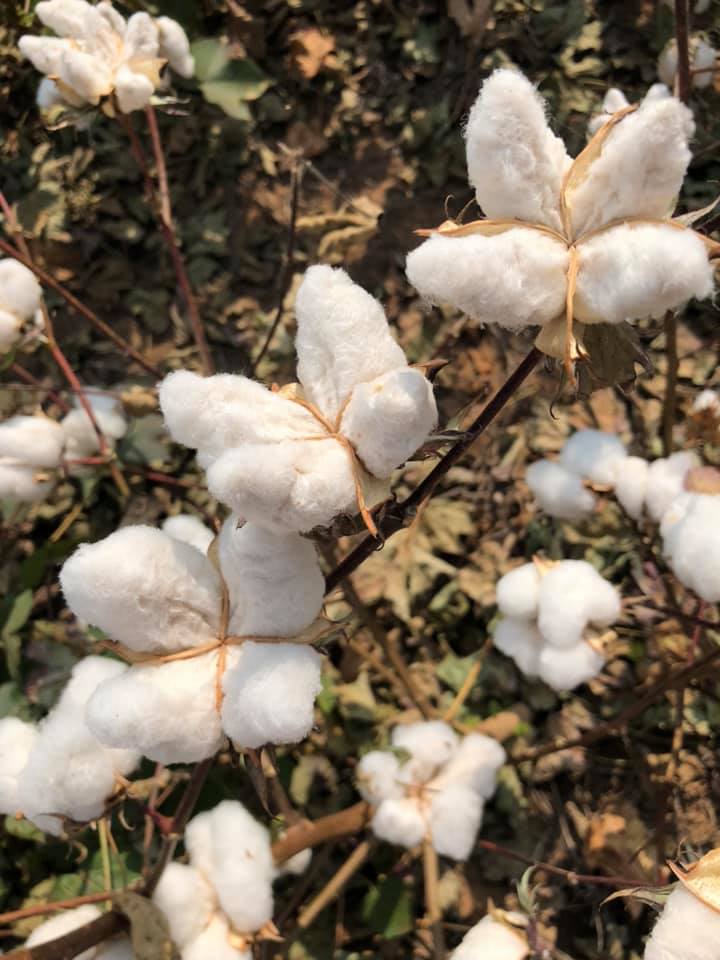 Cotton Boll
Cotton Boll
Photo By: Edmond Bonjour
We moved on to Great Plains Commodities, a train shipping terminal for grains and beans. They showed us the two different loadouts for each type of commodity and explained how the trains are brought in with over 108 cars per train to be loaded. They are currently building new storage and load out for cotton seed which will greatly increase their ability to ship more product.
After walking and listening all day, everyone was very tired and ready to sit, eat, and sleep. Dinner was spectacular at Stockman’s Bank. We were in a private room and Mexican food was served. I assume everyone was as hungry and I was, and Mexican food was a perfect end to my day. Senator Brent Howard and Jennifer Howard spoke to us about the importance of being involved in your community and state organizations. If we want to make our world a better place for our families and friends, be involved in the organizations that promote your beliefs. Your world can be your own backyard, state Capitol, U.S. or worldwide but be involved. We checked into our hotel after a long day…some would say not the best hotel…but we all slept well and were ready to hit the road again on Thursday.
Thursday, October 15
Scribe: Grant Mason
We left Altus and went east to the Phelan Ranch, which was on the western portion of the Wichita Wildlife Refuge. John and Tamra Phelan welcomed us into their barn to talk about their cattle and sheep operation. It is primarily these two that work the ranch, but they have Alex Rosen who helps as well. Alex shoes horses and helps on the ranch. The Phelan’s Ranch is one hundred percent native grass. They do no farming. They were a yearling operation for years and would run yearlings on their ranch from fall until the first part of summer. They started transitioning to taking cattle in on gain, which he advises against. About four years ago, he started taking in cows, getting away from the stocker business. The Phelans are focused on stewardship and pasture management. They manage their pastures with electric cross fencing and time management. It is an intensive grazing system that has worked very well for their operation. They have 25 permanent paddocks but can increase to 75 easily. They have been running sheep for the past twenty years and that has been a vital part of their operation and important to their rotation as well. John’s advice to ranching- “Keep it as simple as possible.” His mastery of land stewardship has allowed him to graze the standing grasses and forbs year-round and feed no hay on the ranch. The only supplement that he uses is a 38% protein cube and some mineral. John won’t keep a cow that doesn’t breed in sixty days, which keeps his calving season very manageable. Another piece of advice he gave us was “Don’t go overboard on fencing.” and to “Spend your money of water.” John’s lamb crop ships 3.5-4 months after birth and he does not have to work them at all before shipping. John’s pasture management has allowed him to reduce his herbicide application to almost zero. He has accomplished this by proper grazing practices and prescribed burning. John explained to us the three components of ranching: 1.) money 2.) grass and 3.) cattle. Money and grass are the most important. The Phelans encouraged us to look into Ranching for Profit, a course by Dave Pratt. He felt that he received a college education in a week. The Phelans have two sons that they told us about as well. Clay Phelan lives in Oklahoma City with his wife and one child. Their other son, Grady, lives in Waco, Texas with his wife and five kids.
Our next stop was at Jahn’s Pumpkin Hill. Mary Beth Jahn owns and operates the pumpkin patch outside of Cyril. She started this agrotourism on their farm in 2002. The first year it opened she had 600 visitors and was elated. This last year she had an unbelievable 12,000 visitors. Mary Beth talked about the importance of people in urban areas getting out and seeing agriculture. She wants them to see, touch, and smell what goes on at a farm. Jahn’s have a petting zoo, hay maze, trampoline, cows, slides, and other amenities in this area. They have recently started making cookies and pies and selling them, which has been very popular. The season for the pumpkin patch goes from the last two weeks of September to October 31st. Mary Beth has done a great job advertising her business on social media. She has hired an individual to do this for her and that has really increased her exposure. She has many school groups come see her pumpkin patch, many from the Lawton schools. When asking what her biggest challenge has been, she cited “help,” meaning labor, which seems to be a recurring theme in this industry. Mary Beth fed us taco soup and homemade dessert which was outstanding.
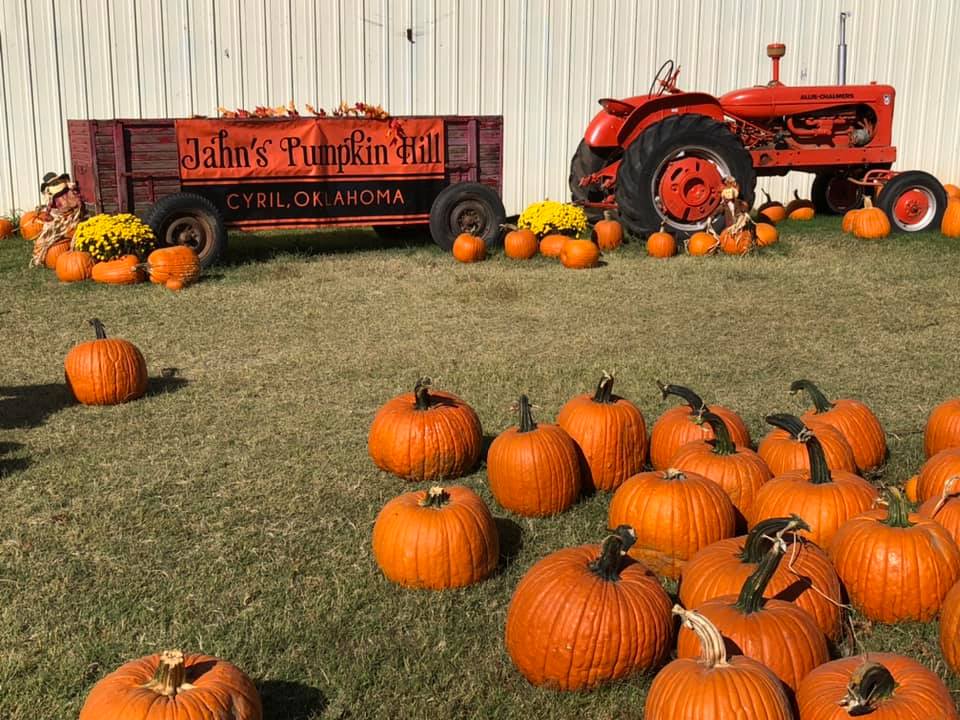 Jahn’s Pumpkin Hill
Jahn’s Pumpkin Hill
Photo By: Edmond Bonjour
After leaving Mary Beth’s we went to Apache and talked with Alan Mindemann, the owner/operator of Apache Seed and Supply. Alan started farming in 1994. Alan always said that the only way he would start farming was if he could be 100% no-till, which he has accomplished and has had great success. Alan specializes in specialty crops and sells nothing as a commodity, which is how he adds value to his products. Alan showed us through his seed plant that he designed and built two years ago with help from an engineering company overseas. He does all of his own seed cleaning as well as custom cleaning for other customers. Alan prides himself on the cleanliness of his facility and wants his customers to know that they are getting a product that was well taken care of from start to finish. Alan grows a variety of different crops including: elbon rye, soft red winter wheat, black oats, German millet, white wonder millet, Japanese millet, brown top millet, buckwheat, okra, hairy vetch, hubam clover, buffalo alfalfa, Laredo soybeans, red ripper cowpeas, black eyed peas, and Chinese reds. His crop rotation and custom cleaning work leaves his seed cleaner running all year long. Alan does all the farming himself, while he has several full-time employees running the seed plant. Alan’s main advice that he gave to the group was “Taking care of the land should be every farmers priority.”
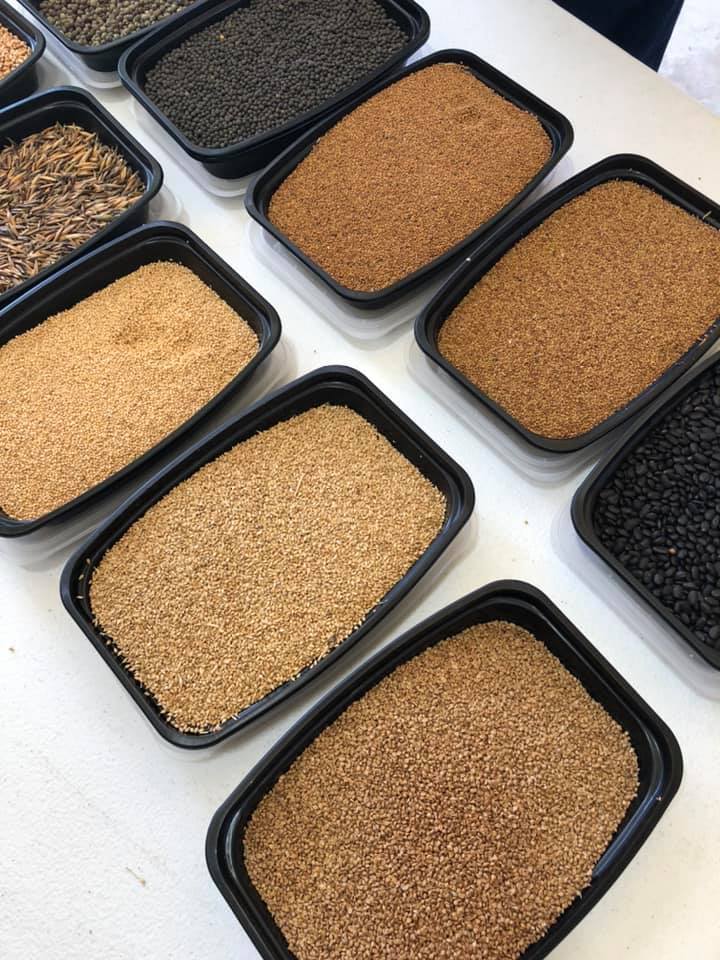 Apache Seed and Supply
Apache Seed and Supply
Photo By: Edmond Bonjour
Horn Canna Farm was the next stop for the group. The farm is owned and operated by Dustin and Nikki Snow in Carnegie. Dustin’s great grandfather started selling cannas in 1928, that his great grandmother grew in her garden. His grandpa would sell them on his vegetable route and that is how the business began. In 1948 Dustin’s grandfather traded a Jersey cow to his dad for the canna business. When his grandfather took over they started selling to suppliers and big box stores, which has been their business plan until this last year. The canna farm is grown under the first irrigation system in Caddo county. The Snows have restructured their business to focus on direct to home sales through their online platform. They were beginning canna harvest when we got there and that takes about twenty-one days. We had the opportunity to watch the washing process of these canna bulbs. They sell about thirty different varieties. They have only sold the bulb of the plant until the requests for the entire plant grew to where they had to meet that demand. They built a greenhouse that allows them to grow and ship full plants to customers all over the United States and other countries as well. They were pioneers in online retail, having started their online business twenty-one years ago, which has allowed them to focus on direct to home customers.
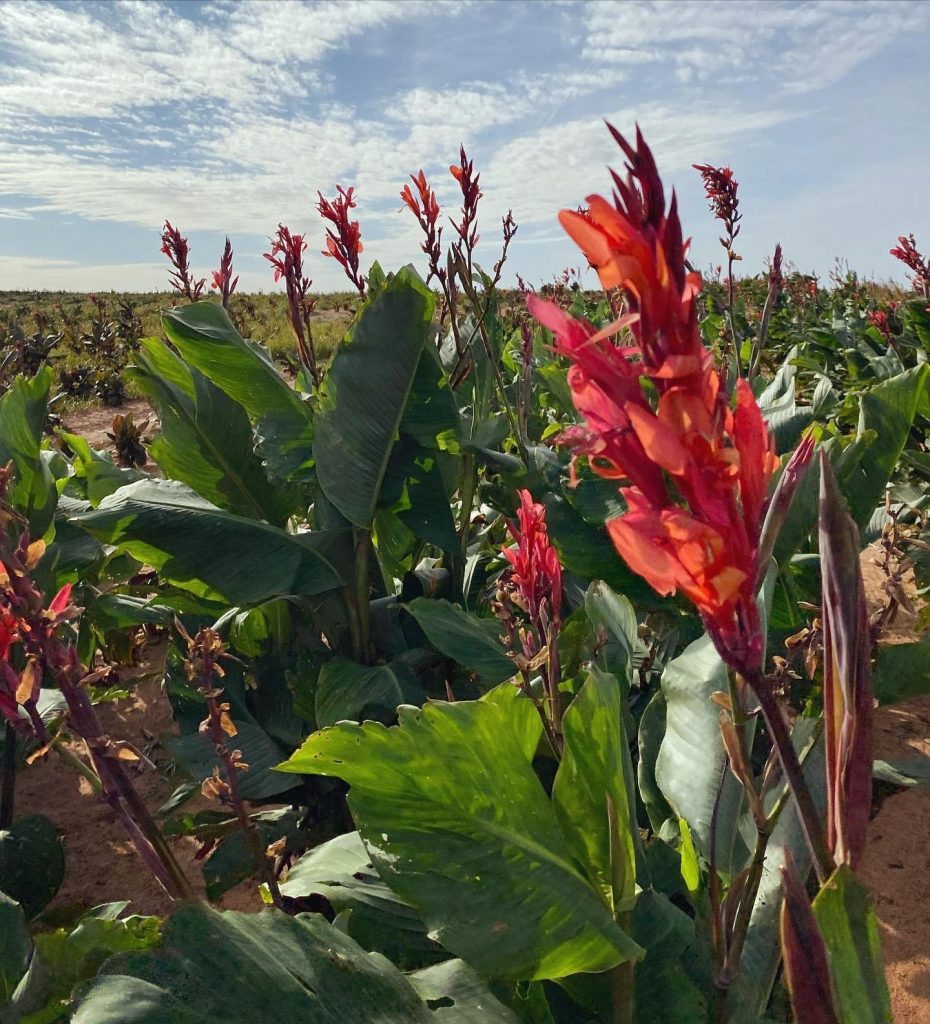 Horn Canna Farm
Horn Canna Farm
Photo By: Emily Shuping
We went to Eakly next and visited with Lauren and Danielle Metz. Lauren is the general manager at Agri-Friends Eakly Peanut Company and his wife Danielle works for the NRCS. We were fortunate to see peanut harvest in action and the process of storage maintenance and storage until they are shipped. Lauren showed us through the grading process that is done independently by the USDA in a building on the property. Three types of peanuts are grown the area, Virginia, Runner, and Spanish peanuts. Agri-Friends contracts with Jiffy, Kraft, Smuckers, and Hershey. This is one of two peanut production plants in the state of Oklahoma. After taking us through the grading process, Lauren showed us their drying process, which is when the peanuts are loaded into van trailers with fans in them and dry them to the desired moisture, which takes about four hours. Lauren showed us a field behind the facility that was being harvested. They dig the peanuts and let them set for 8-10 days before harvesting with the specialized combine. Lauren told us that deer and hogs are the biggest challenge that peanut producers face. When it comes time to ship peanuts out of the facility, they send them to Birdsong, which is the peanut sheller in Brownsville, Texas.
 Agri-Friends Eakly Peanut Company
Agri-Friends Eakly Peanut Company
Photo By: Edmond Bonjour
Our final stop of the evening was at the Tom Stafford Museum in Weatherford. Local OALP alumni from the Hydro area organized the dinner, a talk by the mayor of Weatherford, and a tour of the museum by the director, Max Ary. We had dinner with the organizers and then listened to Mayor Mike Brown talk about the city of Weatherford. Mayor Brown was very proud to tell us about their community and the things that they are doing to improve the town and to capture tourism traffic off I-40. This was one of the reasons that they have expanded the Tom Stafford Museum to almost 60,000 sq. ft. of exhibit space. Mayor Brown also told us of some other improvements coming to Weatherford, such as two new elementary schools, a new soccer facility, and they recently built an event center. After we listened to Mayor Brown speak, the director of the museum, Max Ary, gave us a guided tour. Amazing would be an understatement. The museum, with the help of Tom Stafford himself currently has 40,000 sq. ft. of exhibit space and are in the process of adding an additional 20,000 sq. ft. and 400 new exhibits. The museum is one of the few in the Midwest that has a partnership with the Smithsonian, which allows them to display artifacts directly from Washington, D.C. The exhibits that they currently have are second to none as far as space exploration goes. Max told us about the impact that western Oklahomans made in the race to the moon. Southwestern Oklahoma State University in Weatherford produced over thirty engineers alone that helped man get to the moon. The amount of information that Max shared with us was incredible and virtually impossible to get completely recorded, however the message that he sent us away with was that this museum is meant to “remind people what has been accomplished with exploration and what we can achieve as a country united.”
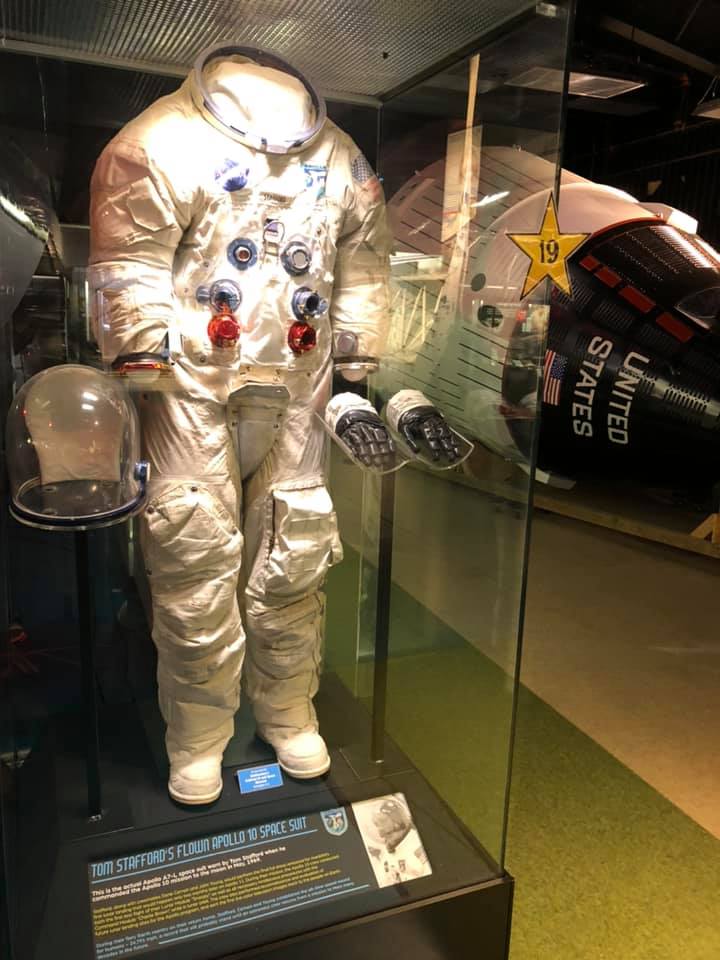 Tom Stafford Museum
Tom Stafford Museum
Photo By: Edmond Bonjour
Friday, October 16
Scribe: Brandon Miller
We started the day with speaker Allen Entz from Hydro on the bus on the way to our first destination. Allen and his family have an auction business, Entz Auction Company. They started as an FDIC storage facility for banks. They also produce cow/calf, wheat, milo, beans or whatever the market allows. Being from Hydro, the city of Weatherford is expanding out to Hydro. Farming along the historic Route 66 has its many challenges. Moving equipment from one side of the highway to the other and dealing with highly trafficked area being one of them. As we were bumping down the narrow old highway, Allen told us the bumps in the highway are 60 feet apart due to the original construction with mules. We passed famous Lucile’s Gas station where Allen said he heard, “if you can walk in there, she will sell you beer”. There is a bridge on Route 66 close to Entz Auction headquarters, that causes a lot of headache when trying to get large equipment to/from the auction site. The bridge is 14ft tall, and we found out, luckily, the bus is less than that. Now, Entz auction does more and more online/hybrid events.
Don Troyer was in Class X and retired from the federal prison in El Reno eight years ago and now runs a hardware store in Hydro on Main Street. Don graduated from OSU in 1981 with an Animal Science degree. He started at the McAlister prison dairy operation, which was the highest paying job he could find at the time. In 1990, he started working at the El Reno federal prison where he worked for 32 years in farm management. They produced milk, butter, and other dairy products. They had inmates deliver these products to other detention facilities to Oklahoma, Arkansas, Louisiana, and Texas. This provided dairy to over 30,000 inmates in 24 different prisons. It was very interesting that Don told us he could communicate to the inmate drivers in delivery trucks through an integrated system in the early 1990s.
Our first tour today was at SS Farms owned by Dean Smith. Our first speaker was Dale Beerwinkle. Dale is a Caddo County extension agent/banker that now runs Ag Strategic Services (ASS). He helps Dean Smith with all his FSA paperwork. Dale said to have a turnaround, every business needs to have an ASS.The second speaker was Shelley Newton. Her title is “Admin” at the farm, but she pretty much runs the place. Dean then told us about the many crops he grows at SS Farms, including super-hot peppers. There are only five growers in Oklahoma that grow super-hot peppers. They are sent to Michigan to be processed for many different uses. About 60% goes into processed foods, 30% to the medical industry, and 10% other. The dust produced during processing at Dean’s facility makes things very uncomfortable, so everyone wears a Tyvek suit.
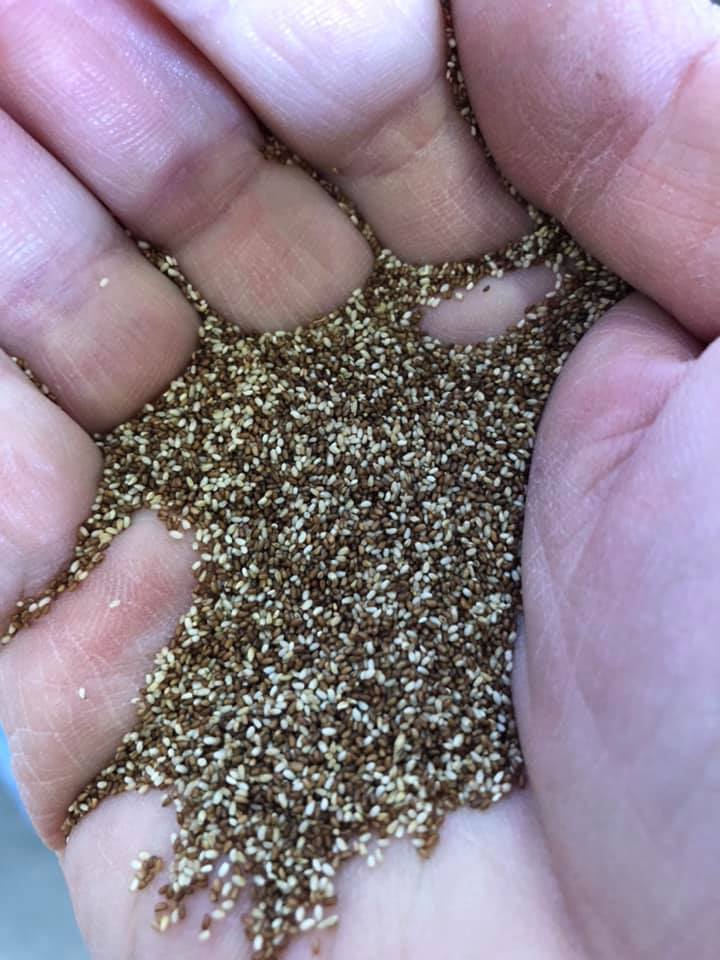 Teff – SS Farms
Teff – SS Farms
Photo By: Edmond Bonjour
Karen Dodson began her presentation going over the history of Krehbiel Farms. They are a 5th generation farm that started with a trade of horses and a wagon for a quarter of land. They now produce sheep for wool and have seed wheat production. They also have T & L Irrigation where they sell center pivots. An earlier generation went all the way to Saudi Arabia to sell the systems and teach about irrigation. Karen’s daughter Brittany Hukill is the 5th generation to live and work on the farm. Karen’s husband, Jeff, passed away several years ago but was an integral part of the farming operations. They base their business off of three things: faith, family and farming. She said to always have a plan in place as you never know what can happen.
The Slagell family has had their farm since 1920 where they started doing custom swathing and harvesting. Today they run a commercial vegetable farm. They produce 11 million pounds of chip potatoes that mainly go to Frito Lay in Irving and Lubbock, Texas, and Topeka, Kansas and are fried within 24 hours of being harvested. They also produce 12 million pounds of watermelons and 11 million pounds of sweet potatoes (which have a much longer shelf life that allow them to sell throughout the year). BlairCilliers then described food safety protocols at Triple S farms. She assists with the food audits on all of the commercially grown vegetables. Organic production adds a lot more to her plate when doing audits. Gabe Hanekom is the shed manager at Triple S farms. Gabe told us that 30% of the watermelons are transplanted and 70% are grown from seed. Twelve million pounds of watermelons is about 250-300 semi loads. While we were touring the fields of sweet potatoes being harvested, Keenen Taylor told us about his crop consulting business where he manages 30,000 acres. He also has 150 registered SimAngus cows and 500 acres of cultivation of his own.
 Triple S Farms
Triple S Farms
Photo By: Emily Shuping
Merlin Schantz told us how Schantz farms was established in 1908. They built their house in 1909 and was it recently remodeled to the beautiful look in 2018. Aaron helps his dad on the farm to try and make it more sustainable. Merlin has been a cooperator with OSU research for many years. Merlin said that for anything to be sustainable, it must be profitable. For every positive there is always an adjacent negative. Aaron and Eli Parr shared their experience on a plot of cotton planted into a cover crop. It will be interesting to see the results at harvest.
After a delicious lunch, we traveled to one of Schantz’s super-hot pepper fields where Dr. Jim Motes told us about how he has been breeding these peppers for 42 years. They have the hottest machine harvestable peppers in the world. There is only one place that extracts the oil in the U.S. and that is in Michigan. OSU is the only breeder for these peppers. On a Scoville heat scale, bell peppers are 0, jalapeño peppers are 30,000 units, cayenne peppers are 80,000 units, ghost peppers are 1,000,000 units, and the hottest pepper in the world, Carolina reaper, is rated at 2.5 – 3 million units. These super-hot chili peppers that they produce are around 700,000 Scoville units. The buyer wants a consistent product of 300,000 Scoville units after processing. This oil is then used in processed foods to make them spicier. Other uses are deep heat rubs and pepper spray (2.4 million Scoville units). They are starting a new venture with the oil from the peppers being added to poultry feed. They have studies that show doing this will help build the immune system. It is cheaper to start transplants in a green house in Florida and truck them to Oklahoma. They said they figure about $500 per acre just to get them transplanted. Total input costs can be over $1,500 per acre. When Merlin was asked what weed control methods were used on the peppers, he said they use the “Santa Clause” method: Ho, Ho, Ho!!! Before we left the pepper field, Meagan Trantham, a field representative for Frank Lucas, visited with us. She told us about her upbringing in the Oklahoma panhandle. Then we went to one of Merlin’s peanut fields where he showed us various processes of peanut harvest. Peanuts are harvested at 18% moisture. The market likes the peanuts to be 8% when sold.
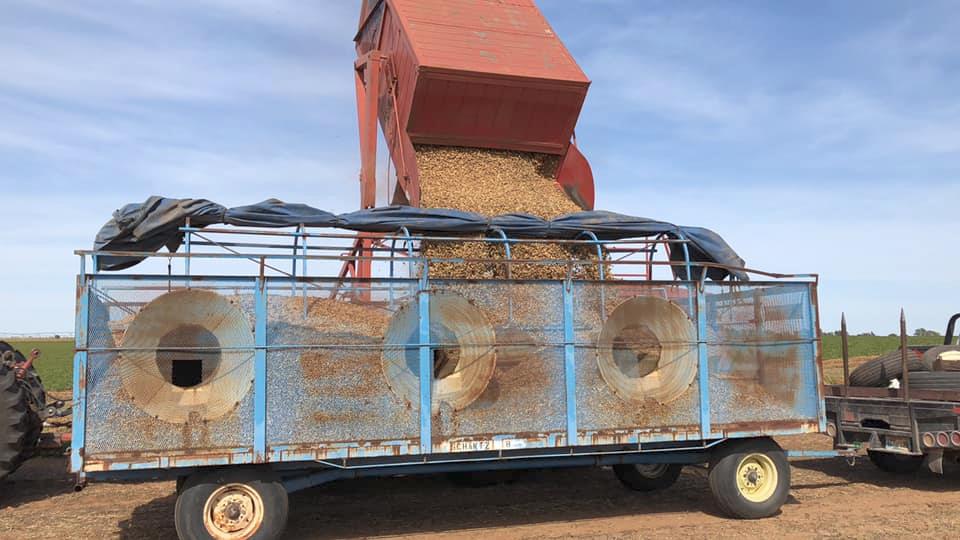 Schantz Farms
Schantz Farms
Photo By: Shelley Mitchell
Here are some observations from Reflections:
The OALP alumni treat us very well.
The OALP group is starting to feel more and more like an extended family.
NASA has very smart people working for them.
Diversity is a key factor in all the operations we visited.
For entrepreneurs: Try it. If you don’t succeed, try it again before you move on, but move on quickly when its time.
A couple quotes that stuck with me during reflections:
Robbie said, “It is flat enough to stand on a tuna can and see Amarillo.”
“Don’t be that one guy in the group!” -Anonymous